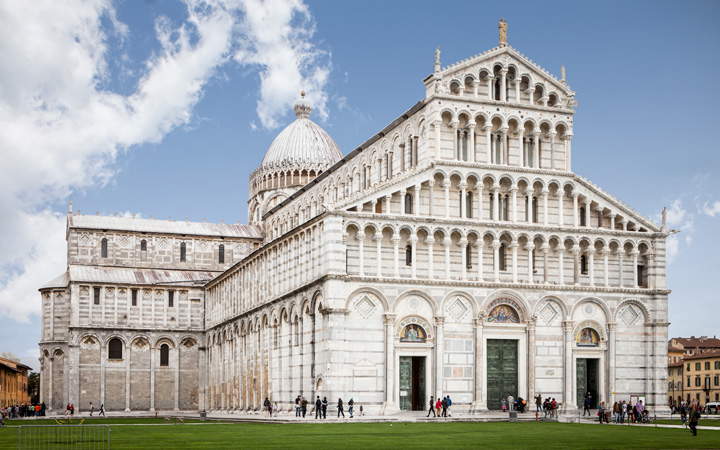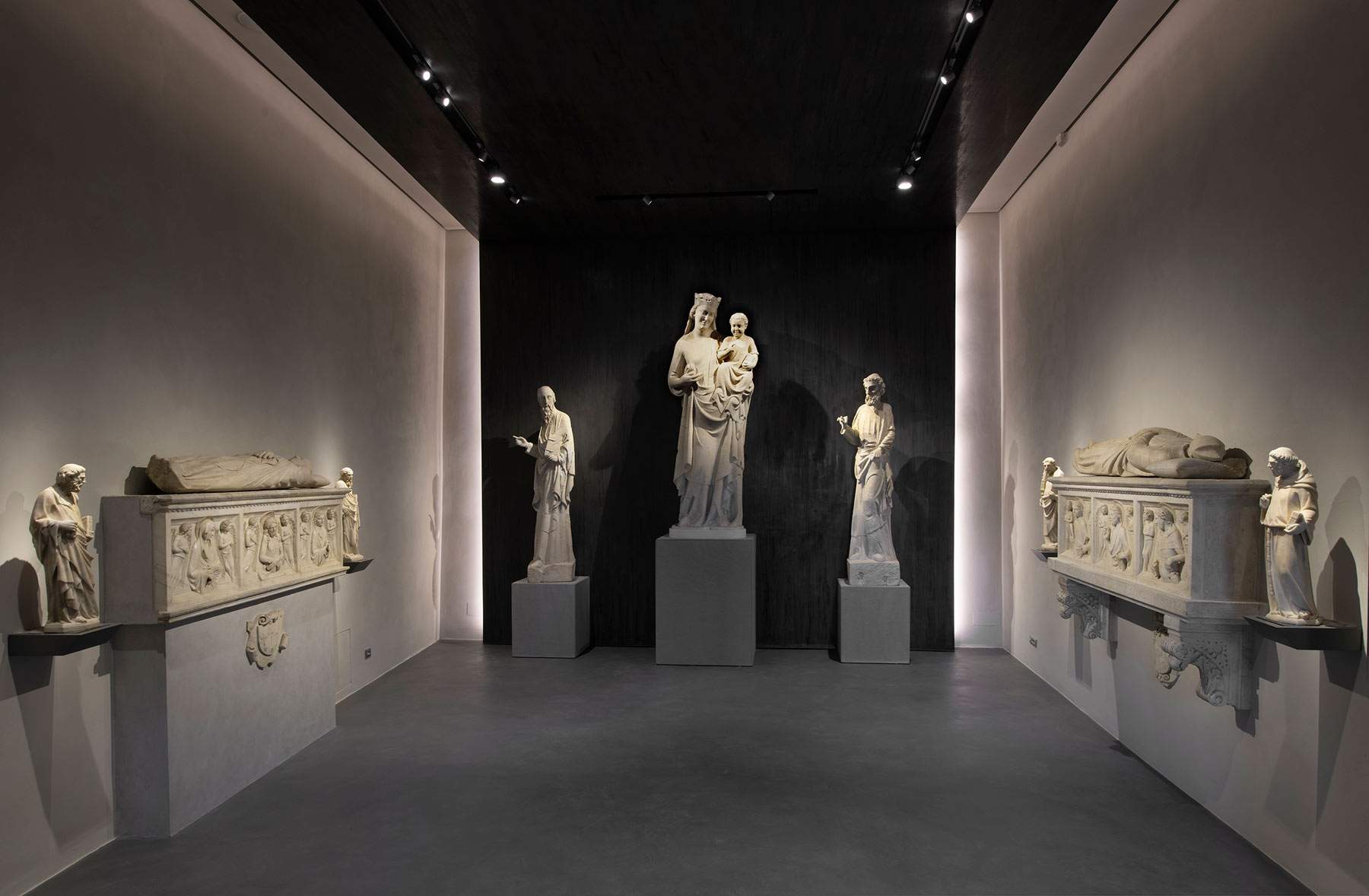More than 3 million visitors, more than 14 million in revenue devoted to conservation and promotion: these are two numbers for the monuments in Pisa’s Piazza dei Miracoli, managed by the Opera della Primaziale Pisana. Four monuments (the Cathedral, the Leaning Tower of Pisa, the Baptistery and the Monumental Cemetery) and two museums (the Museo dell’Opera del Duomo and the Museo delle Sinopie) that, when added together, make a number of visitors that propels the pole into the top five most visited sites in Italy. This is a complex that depends heavily on tourism and visitor flows-how has the coronavirus health emergency impacted it? How will it respond to the challenges the pandemic has thrown up? What will happen to tourism in a city of art like Pisa? We talked about these issues with Gianluca De Felice, secretary of the Opera della Primaziale Pisana. The interview is edited by Federico Giannini.
 |
| The Cathedral of Pisa |
FG. The monuments of Piazza del Duomo in Pisa these days are closed to the public just like all Italian museums and cultural sites. How are you guys coping with these days of health emergency and forced closure?
GD. Obviously, as a result of the Prime Minister’s decree last March 8, we had to close all monuments and museums: therefore, as of that date, we no longer have ticket revenue, which constitutes practically all of our income . Then, with the subsequent decree on the closure of productive activities, we also stopped all construction and restoration activities, as well as ordinary and extraordinary maintenance. The Cathedral is the only monument that is open, but for prayer only: even the holy masses, on the bishop’s instructions, are done behind closed doors and with live television coverage. We have organized ourselves by leaving the security staff at work, meanwhile (we have a group of internal security guards who continue to work to control the monuments and works). And then there are a very small core of workers for minimal routine maintenance and a small number of administrative staff who partly work in the office on short hours and partly work from home in smart working.
For a hub like yours, whose revenue depends heavily on ticketing results, the prolonged closure has a major economic impact.
I would say the situation is dire. On Thursday, April 2, we had a telematic board meeting to assess the losses, which at the moment are not yet quantifiable because we don’t know when you will be able to reopen and when you will be able to return to a form of normalcy. Ours, in fact, is not a simple productive activity: our opening is strongly linked to the return of tourists to the city of Pisa. We are therefore evaluating the losses (we have imagined some possible scenarios) and consequently what we will be able to do based on the situations that will arise.
Speaking of scenarios: analysts are imagining different ones, because there are those who believe that we will soon be back to normal (indeed, perhaps there could be an exploit because people, following such a long period of containment, will have a great desire to get around, travel, and even visit museums), but there are also those who believe, for example, that this crisis will spell the end of mass tourism as we knew it. What are your thoughts on this? How do you think flows will change when the emergency is over?
I may have an optimistic view, but I can say that in this period we have been in contact with tour operators and agencies working with us (who are clearly reprogramming their budgets but also their marketing activity oriented to the summer period and the 2020 Christmas period: agencies always work by reasoning on six- or eight-month periods), and the recurring idea is that people will return to travel not so late. I feel I can say that there is no vision of a future closed society, far from it: at the moment we are moving very carefully, but I do not perceive, in the future perspective, heavy limitations on tourism.
So, contrary to what many people think, in your opinion we will continue to see our art cities still crowded with tourists. Maybe not this year, but maybe from next year onward.
The indications coming from the tourism world are these. We are in a time of great suffering, but once we get over it we will quickly return to normal life.
However, even imagining a future return to the previous situation, before we return to normal as we knew it until a month or two ago, there will be a lot of work to be done. What will you do immediately after the emergency? What will be your exit strategy from this phase?
At the moment we are mainly focused on understanding how to deal with tomorrow. But for us tomorrow doesn’t mean a more or less distant future, and it also doesn’t mean the end of the emergency-it literally means the next day, meaning our problem now is to figure out how to manage to pay salaries, how to manage to pay suppliers, how to manage to pay contributions, how to manage to pay fixed costs. So right now we are really very focused on how to continue our corporate sustainability. However, we are also beginning to think about how to set up the future, and the perspective in our view is geared toward the will to live and the desire to see the beautiful again: we will therefore take steps to work both through Internet channels and through the support of experienced companies that work with tour operators. However, we are convinced that restarting is an effort that cannot be done alone. Let me explain: we live because the tour operators do the packages, because the airlines do their marketing, because the hotel industry does its communication work. So it is a collection of the sector, which will have to move (and I am convinced that it will) in a vigorous way since it has taken a big hit from the virus.
There are many experts in the field who are also pushing for a resurgence of cultural purchases not only by tourists but also by residents of Italian cities. Do you imagine that from Pisa there will be a desire to rediscover the city’s monuments? Do you therefore expect an increase in visits by Pisans or residents of neighboring towns?
Yes, certainly, but I was convinced of this even before we were in this situation. Let me give an example: we opened the Museo dell’Opera del Duomo in October, after five years of restoration and refitting. October is a month of low tourist influx, and the same is true for the following month, but in spite of that during that period we had a very positive return from Pisans, people from the province of Pisa and those from neighboring provinces. I am convinced that as soon as the emergency is over, the desire to get out of the house, to see art and to savor our heritage again will be a determining factor. And this is something that we are already working on: that is, we are setting some ideas that may be of interest to the citizenry. And to be more incisive, we will also need to go through promotion through the local media.
 |
| The new Museo dell’Opera del Duomo in Pisa. Ph. Credit Nicola Gronchi for Opera della Primaziale Pisana |
Will you also use digital media for your promotion?
During the emergency we were not present on social media. Beyond the website, which in our case has a very institutional setting, we have always felt that we should work not in front-office mode but in back-office mode. That is to say: we work on the basis of agreements with tourism movers, we are not the ones who move tourism directly. However, we also have the idea of working on social media, but not so much for the promotion of possible packages, but instead to further stimulate, if there is a need, the desire to go out and see art.
One last question: it is news in the last few hours that ICOM has sent a series of recommendations to museums on what to do during the emergency, particularly on how to continue to ensure protection. However, it has also expressed a wish, which is that once the emergency is over, museums will begin to collaborate more proactively with each other and create networks. Can this kind of collaboration, a more intensive collaboration among museums, be useful in order to get out of the crisis more quickly and to activate a virtuous circle capable of bringing more people to see museums?
In the meantime, I would like to specify that, clearly, ICOM’s indication not to abandon museums is shared by us: our vigilantes are working under the same conditions as they did before the emergency, precisely because keeping an eye on the heritage so that nothing untoward happens is the top priority. And then, as mentioned, we have maintained a small group of maintainers not only for the ordinary activities of fixing up the square but also for additional control to our heritage. As for cooperating, I think it is already a necessity in itself, at any time, let alone now, with this crisis. I continue to believe that tourism today is dynamic and that people do not want to stay too long in one place: the desire to move and the desire for art, which in the not-so-distant future will be the same as before, if not even stronger, will have to lead our territories and our museums to work to promote themselves jointly. On this point, therefore, I fully agree with what ICOM has written.
Warning: the translation into English of the original Italian article was created using automatic tools. We undertake to review all articles, but we do not guarantee the total absence of inaccuracies in the translation due to the program. You can find the original by clicking on the ITA button. If you find any mistake,please contact us.